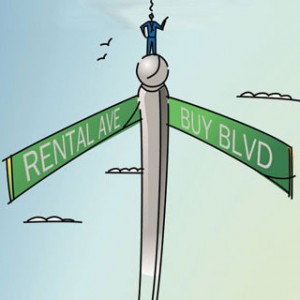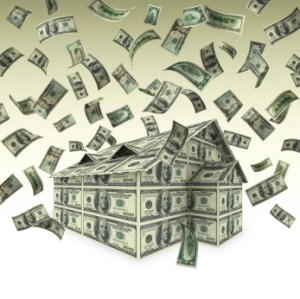
1. Install sunscreens on all windows that get any kind of direct sun starting in late morning through to sunset
2. Use a programmable thermostat to run on a warmer schedule during the day when the house may be empty
3. Install ceiling fans in all bedrooms and living areas, but watch for recessed ceiling lighting which will cause a strobe effect
4. Swap out all standard incandescent light bulbs with energy-efficient compact fluorescent lights (CFLs)
5. Check with your electric company about various rate plans based on time-of-day use and amount of energy needed
6. Run your pool filter at night or whenever your electric rate plan is cheapest
7. Consider solar energy, which is more affordable than ever with government tax credits and electric company incentives
8. Plant shade trees near your house and windows to provide natural light filtering
9. Keep all plantation shutters, blinds and curtains closed in rooms that are unused during the day
10. Update your appliances to energy efficient models, which often pay for themselves over their lifetime with electricity savings
10 Ways to Keep Electric Costs Down
Buying Home Today
 During the past 10 years, throughout most of the country, the majority of people who were renting a home have been better served financially that ones who purchased real property. And it’s never been more true than for Phoenix. The idea of renting may not have held much emotional appeal, especially for those who believed that owning a house was also a better long-term prospect. But leasing a rental property would have most likely saved you thousands of dollars a year.
During the past 10 years, throughout most of the country, the majority of people who were renting a home have been better served financially that ones who purchased real property. And it’s never been more true than for Phoenix. The idea of renting may not have held much emotional appeal, especially for those who believed that owning a house was also a better long-term prospect. But leasing a rental property would have most likely saved you thousands of dollars a year.
For the real estate markets that have collapsed by as much as 40% in many parts of the US, property prices have fallen so much from their highs of 2006 and 2007 that buying a home appears to be a bargain, based on a New York Times study of house prices and rents in 54 metropolitan areas. In Phoenix, home prices relative to market rental rates are as low as ever.
The idea behind this research is based on comparing the costs of buying a property versus renting a comparable home. Please note that this kind of survey can obviously not predict what the best decision will be for your situation. But it does show whether a buyer will need a large appreciation in future home appraisals to cover all the different costs of home ownership for items such as the required down payment, buyer closing costs, annual property taxes, loan origination fees, mortgage insurance premiums, property maintenance repairs and HOA or condo fees.
A great way to determine what is happening in your desired neighborhood is to consider what the real estate experts refer to as the rent ratio. This is simply the total purchase price of a home divided by the annual cost of renting a similar one in the same area. The magic number 20 provides us with the litmus test rule. When you make the described calculation, keep in mind that a rent ratio above 20 suggests you should at least consider renting, especially if you plan to move within the next 5 years. When the rent ratio is below 20, the case for buying a house becomes more convincing.
Obviously owning a home brings other benefits that are not only financial. Pride of home ownership also offers stability, comfort and freedom. A family that is reasonably confident they are unlikely to move for 10 years may well be very wise to purchase a home at today’s relatively attractive prices.
Sub-Prime Mortgage Crisis
 In 2007, the United States witnessed a failure of many sub-prime mortgage lenders (like Countrywide, which was taken over by Bank of America). And even some of the most recognized lenders were burned: Wells Fargo cut over 500 jobs in their sub-prime lending department. In addition, dozens of other sub-prime mortgage lenders have shut down. As a result of the chaos, underwriting rules have tightened significantly. Fewer borrowers now qualify for a mortgage or a refinance. More and more prospective borrowers have to deal with real estate short sales and property foreclosures, which often affect the value of the entire neighborhood. The real estate market across most of America collapsed in 2008 and 2009 but the panic is slowly starting to subside.
In 2007, the United States witnessed a failure of many sub-prime mortgage lenders (like Countrywide, which was taken over by Bank of America). And even some of the most recognized lenders were burned: Wells Fargo cut over 500 jobs in their sub-prime lending department. In addition, dozens of other sub-prime mortgage lenders have shut down. As a result of the chaos, underwriting rules have tightened significantly. Fewer borrowers now qualify for a mortgage or a refinance. More and more prospective borrowers have to deal with real estate short sales and property foreclosures, which often affect the value of the entire neighborhood. The real estate market across most of America collapsed in 2008 and 2009 but the panic is slowly starting to subside.
A little history and information about sub-prime mortgages can shed some light onto what happened. A borrower’s credit score and loan-to-value ratio typically determine the type of loan he or she will qualify for. Traditionally, less-than-decent credit scores (under 650) and high loan-to-value ratios (95-100% financing) resulted in sub-prime loans. Sub-prime loans carry higher interest rates than conventional mortgages, which results in a higher monthly payment and can sometimes lead to negative amortization (the loan balance owed grows over time because the monthly payments are not enough to cover both principal repayment and interest payments), especially early on in the repayment process. Further, sub-prime loans such as the “stated income” and “no documentation” mortgages (jokingly referred to as “liar loans”) are charged even higher borrowing rates. Most of these types of loans were also adjustable rate mortgages, which means at a certain time the monthly payment and/or terms can change significantly.
Naturally the huge growth of easy to obtain (but risky) mortgages led to a sharp demand for more and more real estate. Home prices skyrocketed and first-time speculators and investors entered the housing market. Offers of “interest only” loans were abundant but it soon reached a plateau. In 2009, many of these adjustable rate mortgages started to hit their 2-year mark and borrowers were stunned when they found out their new terms dramatically increased their monthly payments. Houses started to go into foreclosure. Banks were losing money and the sub-prime market came to a standstill. As home prices declined, many have found their homes are no longer worth nearly what they paid for them. Homeowners prefer not to sell at depressed prices, they cannot pay the monthly mortgage and they default.
In August of 2007, the major banks stopped lending to one another because they were afraid of getting stuck with bad sub-prime mortgages. Today it is more difficult to qualify for a mortgage but these tighter restrictions are aimed at preventing the US housing market from further collapse in the years ahead.
